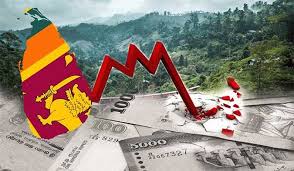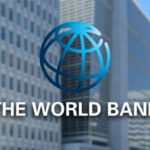
Global Tensions Cast a Shadow over Sri Lanka’s Fragile Economic Recovery
- CNL Reporter
- June 21, 2025
- Weekly Economic Review
- Sri Lanka
- 0 Comments
WEEKLY ECONOMIC REVIEW
Sri Lanka, while geographically removed from the conflict zone in the Middle East, is feeling the economic tremors of the escalating Israel-Iran tensions. As the situation intensifies, ripple effects are being felt across the island’s critical economic sectors—particularly tourism, remittances, and energy—posing fresh challenges to its post-crisis recovery.
Tourism Hit by War Jitters
Tourism, which contributes roughly 5% to Sri Lanka’s GDP and supports nearly a million livelihoods, is under renewed pressure. The resurgence of geopolitical instability in the Middle East has dented global travel confidence, leading to a noticeable slowdown in tourist inflows.

Tour operators in Colombo report a 20–30% decline in bookings from Western European markets since April 2025, coinciding with the heightening of hostilities between Israel and Iran. Airline rerouting to avoid conflict zones in the Middle East has led to longer flight durations and increased ticket prices, diminishing Sri Lanka’s appeal among cost-conscious travelers.
The conflict has also drastically affected arrivals from the Middle East—once a growing segment for Sri Lanka’s tourism sector. Outbound travel from Israel, Iran, and the UAE has sharply declined, with Israeli and Iranian tourists now virtually absent following their governments’ travel bans. Religious tourism, including visits to ancient Buddhist sites by Middle Eastern tourists, has slowed considerably.
Popular tourist hotspots such as Bentota, Unawatuna, and Arugam Bay are seeing falling hotel occupancy rates, while tour guides, boutique hotel operators, souvenir vendors, and restaurant owners are facing significant income losses. The overall dip in tourism revenue threatens to derail the country’s fragile economic stabilization following the COVID-19 pandemic and the 2022-2023 financial crisis.

In response, the Sri Lanka Tourism Promotion Bureau is intensifying efforts to attract travelers from India and China, while boosting domestic tourism through incentives. New initiatives such as digital nomad visa schemes and “work-from-paradise” packages are being rolled out to appeal to long-term international visitors. Authorities continue to highlight Sri Lanka’s safety and distance from the conflict zone to reassure prospective tourists.
Remittances and Oil: Additional Risks
Foreign Minister Vijitha Herath warned in Parliament that Sri Lanka could face reduced foreign remittances and a rise in oil prices as a result of the Israel-Iran conflict. Over 20,000 Sri Lankans work in Israel, sending home crucial remittances that help shore up the country’s foreign exchange reserves. Any disruption to their employment or ability to remit earnings could have serious macroeconomic repercussions.
Oil markets have already begun reacting. On June 18, Brent crude futures rose by over 2% to $74.72 per barrel, and West Texas Intermediate crude was up nearly 1.8% to $73.05. Although energy infrastructure has not yet been significantly impacted, concerns remain over potential disruptions to vital oil and gas flows in the region. Rising global oil prices would place additional pressure on Sri Lanka’s import bill and domestic energy prices.
Slowing Growth amid Structural Challenges
During the week ending May 20, Sri Lanka’s economic outlook remained mixed. GDP expanded by 4.8% in Q1 2025, down slightly from 5.1% in the previous quarter. Inflation stayed in negative territory due to falling energy costs and currency appreciation, but is expected to turn positive by mid-year—potentially affecting household consumption.
Meanwhile, structural weaknesses persist. Fitch Solutions projects the current account will slip into a deficit in 2025, reversing the surplus recorded in 2024. This shift is attributed to easing import controls and subdued export growth. The government’s fiscal deficit is projected to reach 6.8% of GDP—marginally above the target of 6.7%.

Efforts to stabilize the economy include debt restructuring, new tax policies, and structural reforms. Revised VAT and income tax measures, including those targeting digital services and service exports, came into effect on April 1. A national food security index is also in development as part of broader policy reform.
President Anura Kumara Dissanayake, speaking at the high-level conference “Sri Lanka’s Road to Recovery: Debt and Governance” on June 16, acknowledged that while macroeconomic conditions have stabilized, deeper reforms are essential. “Surface-level stability is not enough,” he said, urging accelerated structural changes to safeguard the country’s long-term resilience.
A Call for Reform Ownership
At the same conference, IMF First Deputy Managing Director Dr. Gita Gopinath praised Sri Lanka’s progress but cautioned against complacency. She emphasized that reforms must continue and warned against “reform fatigue”—a phenomenon that derailed many of Sri Lanka’s past 16 IMF-supported programmes.

She highlighted the need for inclusive governance and socially balanced policies, noting that success should be measured not just in macroeconomic terms but in whether this recovery becomes the last IMF intervention Sri Lanka needs. “The key lesson from this crisis is that it must never happen again,” she stressed.
Investment on the Rise, But Challenges Remain
Amid these headwinds, there were some positive developments. The Board of Investment (BOI) reported a $96 million increase in Foreign Direct Investment (FDI) in Q1 2025 compared to the same period last year. Domestic investment rose by $21 million, and export income grew by $176 million.
So far in 2025, the country has attracted a total of $4.67 billion in investment proposals. President Dissanayake, while chairing the BOI’s progress review meeting on June 20, called for a shift in strategy—moving away from recapturing missed opportunities toward seeking new sectors for growth, particularly in services. He noted that Sri Lanka has only attracted around $22 billion in investment since 1978—falling far behind regional competitors like Vietnam, which secured $23 billion in 2022 alone.
Conclusion
Sri Lanka’s path to recovery is beset by external shocks, fiscal challenges, and global uncertainties. The fallout from the Israel-Iran conflict underscores the vulnerabilities of a small, open economy reliant on tourism, remittances, and energy imports.
Nevertheless, with targeted reforms, strategic investment promotion, and a focus on resilience, Sri Lanka has an opportunity to consolidate its fragile gains and lay the groundwork for lasting economic stability. But time is of the essence, and so is consistency in policy execution.

